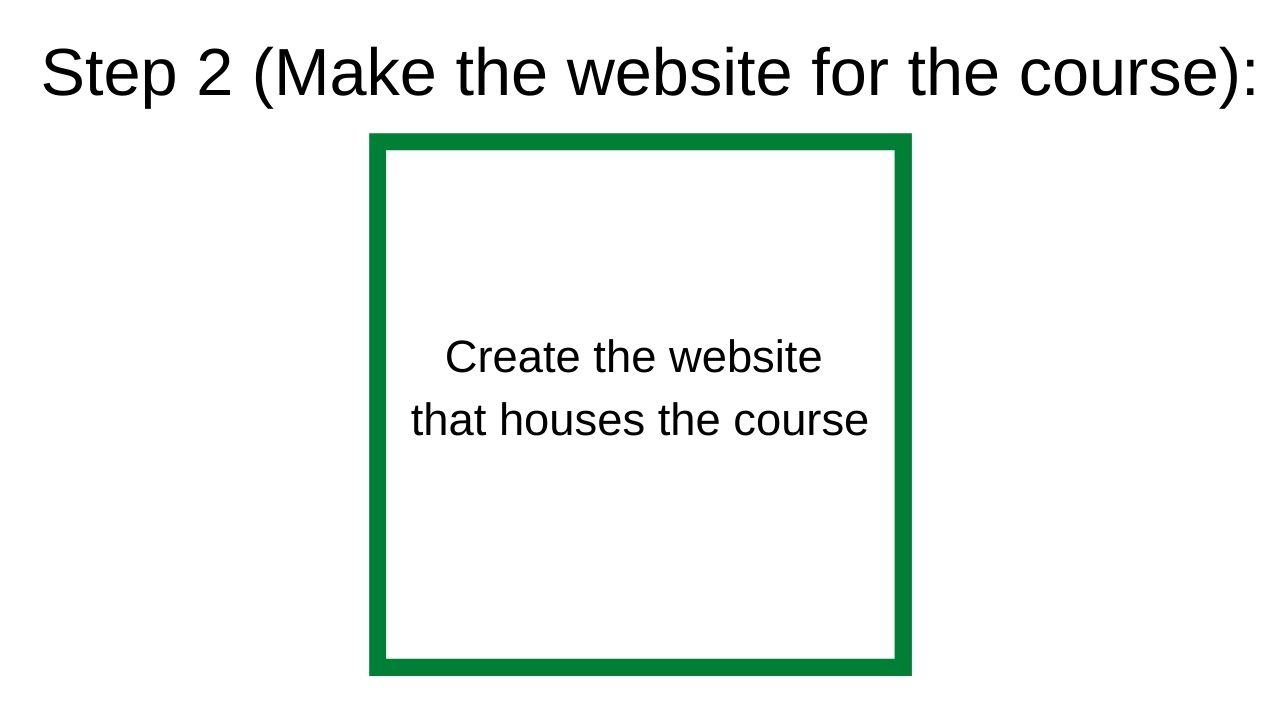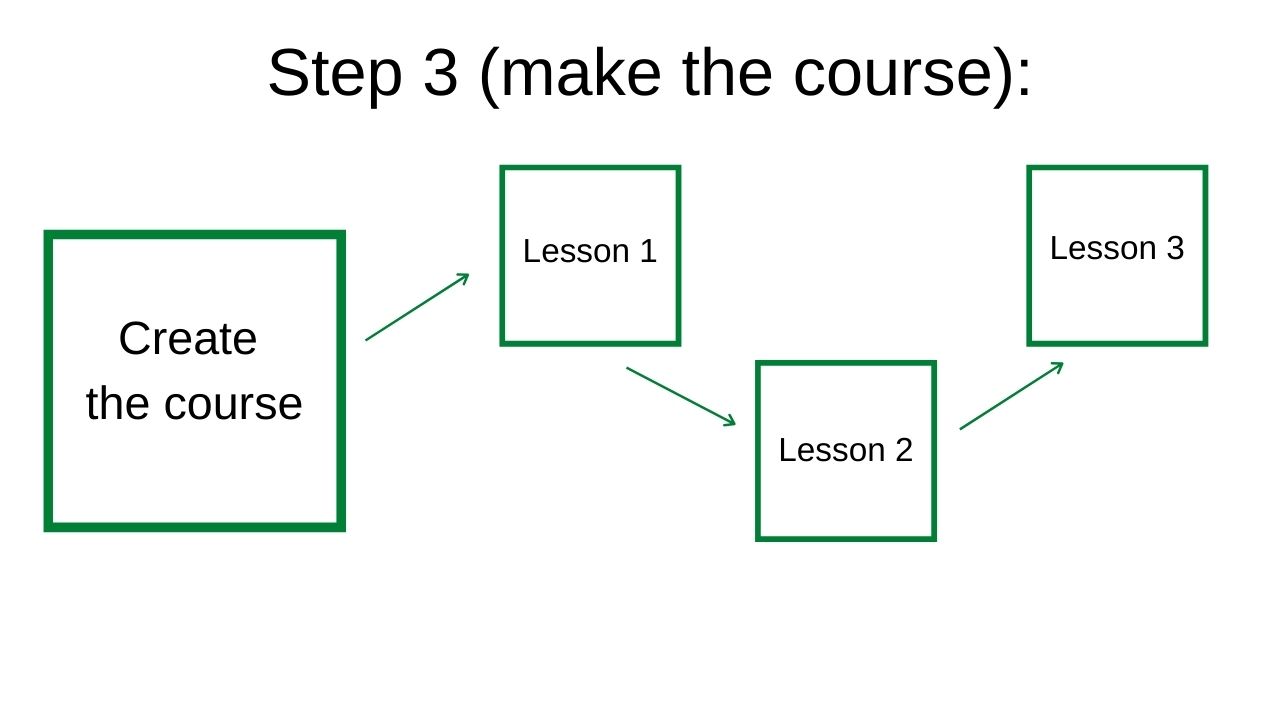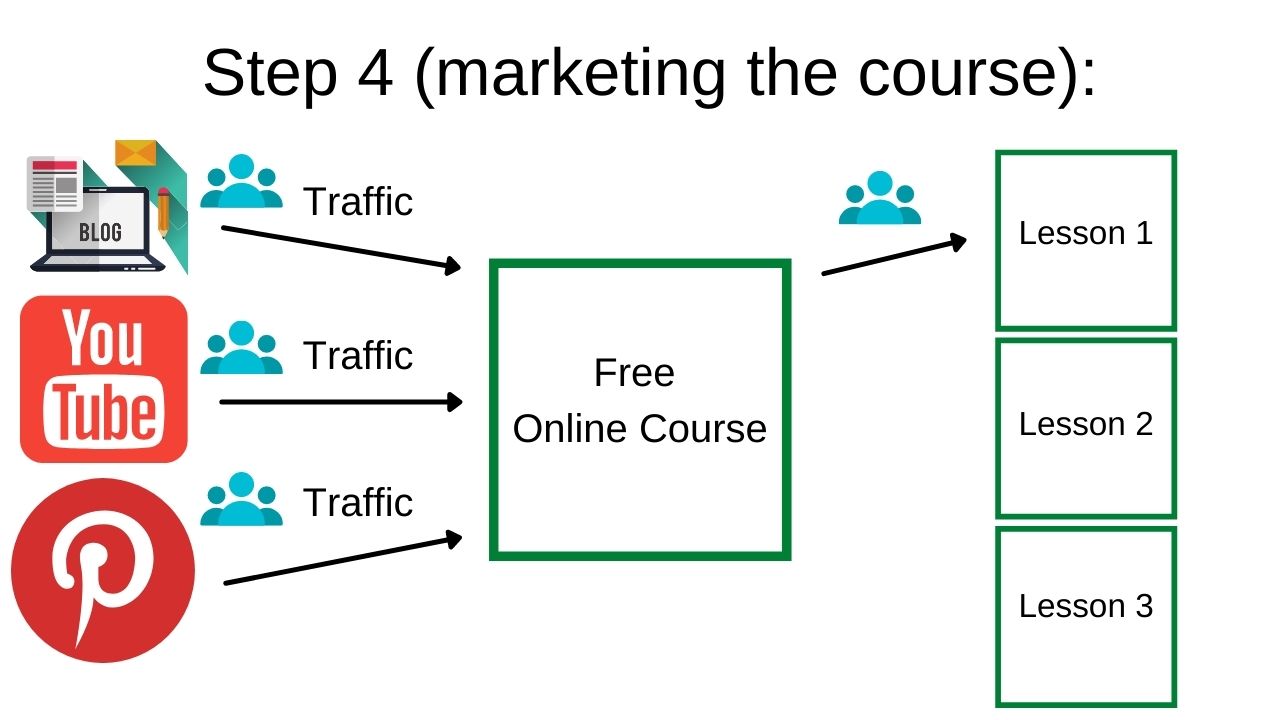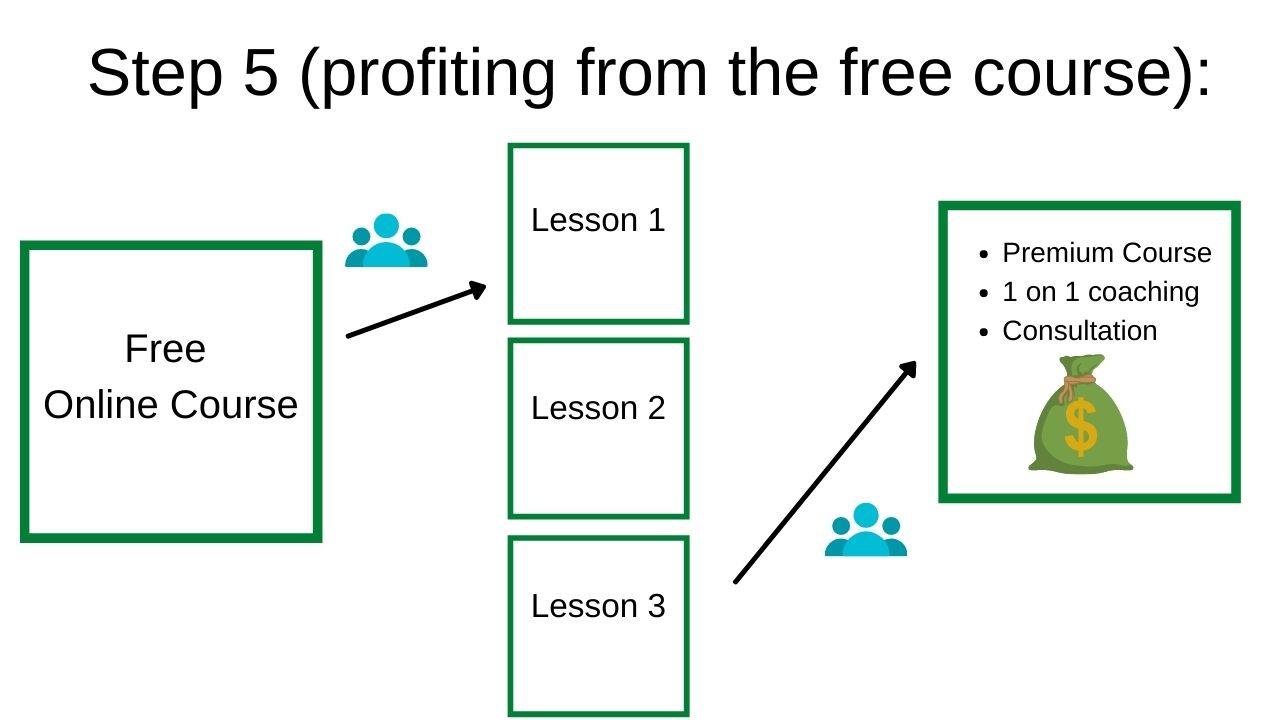I’ve created numerous online courses for free over the years, including on this website and in this post will be showing you how I do it step by step, all the way from the brainstorming part to driving leads to sign up to it.
Let me share some of my online courses that I’ve created over the years:
- In 2008-2010, I had a free weight loss guide/course that got over 30,000 leads signing up to it.
- I have several online courses in the Wealthy Affiliate program.
- I recently created a free online business course on this website (click here to get it) which is amassing members daily.
- I have earned $20,000+ through the courses I have created (some started with free members that upgraded).
Overall, I probably have created over a dozen courses in the past 15 years in different niches and that encompasses my resume in this field.
Now this guide isn’t meant to be the most detailed, but it is more than enough to give you a proper frame of what to do in order to make your online course successful and with that said:
Here is the step by step guide on how to create a free online course (5 steps):
- Choose a niche that makes sense to build an online course with.
- Create a website which houses that course.
- Create the actual course (I’ll show you how).
- Market the online course (I’ll show you the several methods available).
- Make money from the free online course (many options are available).
Now let’s get into each step:

1) Choose a niche with which to build the free online course on:

There’s 2 suggestions I have to make this work:
- Select a popular niche topic which is popular to build the online course with.
- Make sure that niche is something you actually know a lot about because your course needs to offer value and good content.
With the courses I created, they were all based on popular subjects, all of which I had experience with and thus this ensured the following things were in place:
- First, the niche was popular, so finding people interested in getting the free course would be easy.
- Second, because I know about that niche, I had enough knowledge to actually create a high value course on the subject.
Here are just some ideas of what niches you can make online courses from:
- Relationships: How to get an ex back, marriage advice.
- Making money through specific means: Real estate, stock market, email list, affiliate marketing.
- Health: Courses on how to get six pack abs, a course on detoxing, a 10 day course on dropping 20 pounds, ect…
- Popular school subjects: Mathematics, science, ect…
2) Create a website where you’ll have the course available on:
I used to make my courses in PDF books and send them out through email, but today I suggest you go with a website.
The website can offer several pages which people can go through one by one to digest your course.
For example, if I’m creating a 5 step course on how to drop 10 pounds, I can make 5 pages on this, with each page being it’s own separate step to cover this subject.
This gives people more value and it’s easier to organize your online course this way.
3) Create your free online course:

You have several options available:
1) You can literally write out the content in text on each page.
2) You can create a YouTube video or a series of videos for the course, make it/them unlisted and put it on the website. This way the only people who see the videos would be those who access it through your site. This is how I create my online courses today (it’s just easier for me).
3) You can also elect to make your online course available through email, but that is a bit annoying and I would only use email marketing to send people who opt in to your course to go to your website where they’ll find it (this is what I personally do today).
Whatever you go with, make sure to organize your online course, meaning:
Do not cram everything into one page, one video or one email (that’s too much to digest). Break up your course into a step by step lesson people can digest in incremental pieces.
For example, My online business course has the following layout:
- People opt in to get it (give me their email).
- Thank you page (this thanks them for signing up and previews what they’ll learn).
- Step 1 (I show them the first step to building their business).
- Step 2 (Picks up after the first step and shows them how to make websites).
- Step 3 (Picks up after the second step and shows them traffic generation strategies).
- Step 4 (Picks up after step 3 and shows them how to make money with the website).
- Step 5 (Offers a premium membership to Wealthy Affiliate where they can get all the help to build the business so they don’t struggle on their own).
All together, there are 7 pieces to this free online course and each part of it has it’s own lesson. And I organize this course in a way where once people sign up or go through one lesson, a link is provided to the next page to help them continue digesting this course and moving forward.
I don’t cram subjects together and isolate each one on every lesson. Again, you can get this course absolutely free to see it for yourself here. And you can also take notes on how I organize my content in this course for your own ideas as well.
As for the content itself, focus on the quality of it, meaning if it’s text, create great information, good imagery and give people information they’ll love. This is easy to do if the niche you have chosen is one you are knowledgeable on.
If the content is on a video, the background doesn’t matter much, but the quality if your voice and the content you deliver does, so make sure people can hear and see you clearly. I would also recommend investing in things like:
- Camtasia (for editing videos).
- A Yeti Microphone, which is good for sound quality.
- Using Canva.com for images such as PowerPoint presentations.
4) Market your free online course:
The bottom line is that your online course needs members/sign ups, otherwise it’s worthless. There are several options available to do this and depending on your level of skill in online traffic generation (and budget), will determine which method suites you best.
1) Blogging:
Your best bet if you have a small budget to work with. You’ll basically blog about your niche topic through low competition keywords to get visitors to the website and on the website pitch your course there. Your timeline of success in this is about 1 year because that’s usually how long it takes for websites to get good traffic from free sources.
For me, most of the people I get to my free course on this site actually comes from blogging.
2) YouTube videos:
This is also a good option and unless you’re shy, I highly recommend recording yourself talking about your niche and posting the videos on YouTube and linking people to your course in every video description.
Say you’re a relationship expert and are trying to get leads to your free online course. Well make YouTube videos on relationship and dating topics and give people good value in those videos that helps them. Then in every video mention how you have a free online course available that teaches more about this and tell them to visit your site in the description to get it.
More videos produced = more visitors seeing your content = more potential prospects signing up to your online course.
3) Pay per click ads:
You should only get involved with this method if your free course has a high ticket upgrade people can buy and you have a budget to spend on ads.
What you’re going to do is set up ads on different networks depending on the niche and here are some options:
- Facebook Ads.
- YouTube Ads.
- Bing Ads.
- Pinterest Ads.
- Google Ads.
Each of these pay per click networks can be set up to bring in the right traffic to your website to sign up to your course (this requires experience and money).
4) Pinterest:
I would recommend using Pinterest (the free option) to post beautiful images related to your niche and using this network to attract free leads. It’s a good place to get them too, especially if you’re pitching free online courses in things like:
- Losing weight.
- Getting clearer skin.
- Relationship stuff.
If you can post nice looking images on this stuff, you can likely get a good amount of visitors overtime seeing those images on Pinterest, clicking on them and pitching them your online course.

5) Making money from the free online course:
Unless you have nothing better to do than give away free content, you are likely going to want to make “some” money off your course and this is what a lot of people end up doing in this particular world:
- They offer free online courses that give people valuable information and help.
- But they also offer an upgrade to that course that further helps people out with the subject.
Here are just some things to consider that you can pitch in your free online course:
1) If you’re making a free relationship course, you can offer a paid coaching session to anyone who wishes to get your personal 1 on 1 help.
2) If you’re making an online business course like I do, you can pitch an affiliate program like I do which Wealthy Affiliate to help people get all the tools and help needed.
3) If you’re creating an online course on something like starting a real estate business, you can literally create your own premium course, charge $500 for it and offer bonuses for those members who upgrade. Here’s how this looks:

Further tools I recommend for your free online course (autoresponders):
Before you start creating an online course, make sure to set up an autoresponder which will help you collect emails from your potential leads and stay in touch with them. I promise you that you’re going to be making a big mistake if you don’t invest in this.
When people find your online business course, you are going to want to convince them to sign up and “just” offering a free course is often not enough. There needs to be some clickbait and copywriting skill involved in this and here’s some examples:
If you’re pitching a free relationship online course, you can convince people to sign up by saying something like:
“5 day relationship course shows you how to get back the love of your life step by step (before it’s too late!)”
Things like that typically give people incentive to sign up. And the free stuff is just a bonus on top of it, but the selling point is a statement like that. And this type of messaging should be replicated across whatever niche you decide to create your course on.
But moving onto the email stuff:
The online courses I create work together with a program called Aweber which stores those emails and allows me to remind them to go to the next lesson in the course they signed up with.
Setting up an autoresponder account isn’t all that difficult but it is a key tool you’ll want to use with your free online business course.
And that pretty much summarizes the basics and most important elements of how to create your free online course.
If you’d like to learn more, I would actually recommend my personal online business course for further details because what I do cover is many of the steps shared here but in greater detail on how to do that.
